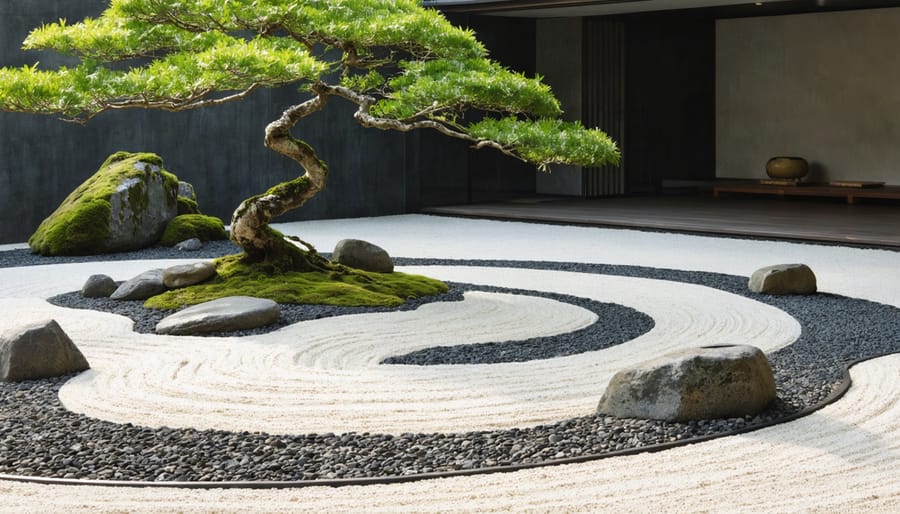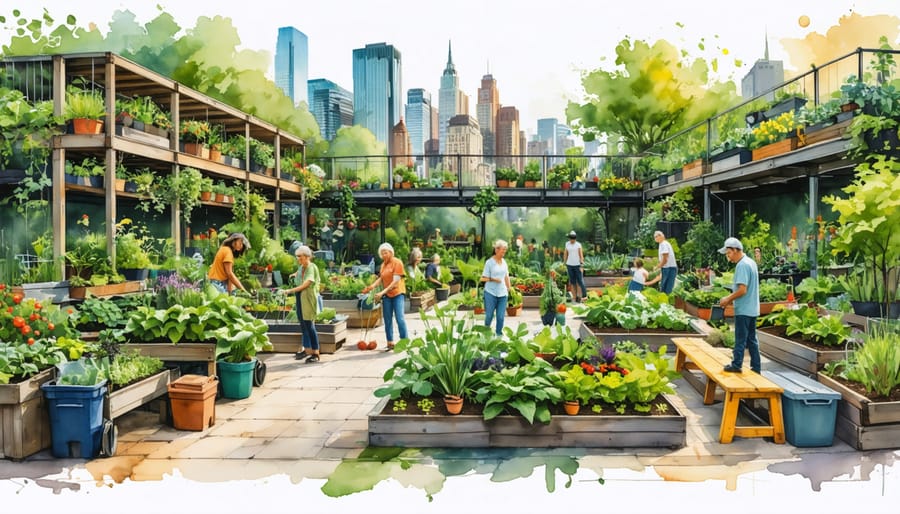Gardening myths have shaped our horticultural practices for generations, passing from one backyard enthusiast to another like well-loved family recipes. Yet many of these time-honored beliefs—from talking to plants for better growth to adding sugar to flower vases—rest on shaky scientific ground. As modern research illuminates the true nature of plant biology, we’re discovering that some of our most cherished gardening wisdom needs serious pruning.
From the ancient Greeks’ belief that moonlight enhanced crop growth to contemporary claims about coffee grounds as a cure-all soil amendment, these garden legends reveal our enduring desire to understand and nurture the natural world. While some traditional practices have proven surprisingly accurate, others continue to mislead well-meaning gardeners, potentially hampering their efforts rather than helping them.
In this exploration of garden folklore versus fact, we’ll dig deep into the roots of common gardening myths, separate scientific truth from well-intentioned fiction, and uncover the fascinating stories behind these botanical beliefs. Whether you’re a seasoned gardener or just beginning to develop your green thumb, understanding which traditional practices to keep and which to compost will help you cultivate a more successful and sustainable garden.
Ancient Garden Myths That Still Influence Us Today
The Moon’s Mystical Influence
For generations, gardeners have looked to the moon for guidance on when to plant their crops. The practice of moon phase gardening suggests that the lunar cycle influences soil moisture, seed germination, and plant growth. According to this ancient wisdom, certain activities should align with specific moon phases – planting above-ground crops during the waxing moon and root crops during the waning moon.
While these traditions have deep cultural roots, scientific evidence supporting moon phase gardening is limited. The moon’s gravitational pull does affect Earth’s tides, but its influence on soil moisture and plant growth hasn’t been conclusively proven. Studies examining the relationship between lunar phases and plant growth have produced mixed results, with most showing no significant correlation.
However, following a lunar planting calendar isn’t harmful to your garden. Many gardeners who practice moon phase planting report positive results, which might be attributed to the careful planning and consistent attention this method encourages. The calendar provides a structured approach to gardening tasks, helping gardeners maintain regular planting schedules.
Whether you choose to garden by the moon’s phases or not, the most important factors for success remain consistent: proper soil preparation, appropriate watering, adequate sunlight, and regular maintenance. These fundamental practices will serve your garden well, regardless of what phase the moon happens to be in.

Sacred Plants and Their Powers
Throughout history, sacred garden traditions have attributed magical properties to common plants. While our ancestors’ understanding of traditional plant uses often had a mystical element, many of these beliefs were rooted in genuine beneficial properties.
Take lavender, for instance. Ancient cultures believed it could ward off evil spirits, but we now know its calming aromatherapeutic properties are very real, helping reduce anxiety and promote better sleep. Similarly, sage was thought to bring wisdom and protect against negative energy. While it may not grant supernatural wisdom, sage does contain powerful antimicrobial compounds and can help purify air quality.
Rosemary, traditionally planted to attract elves and encourage remembrance, actually contains compounds that may improve memory and cognitive function. Even the humble dandelion, often considered a nuisance today, was revered as a sacred healing plant. Modern research confirms it’s packed with vitamins and has potential liver-supporting properties.
While we might smile at some of these ancient beliefs, many sacred plants have proven their worth through scientific study. Rather than dismissing old wisdom entirely, today’s gardeners can appreciate both the cultural significance of these plants and their evidence-based benefits, creating gardens that honor both tradition and modern understanding.
Modern Myths That Need Debunking
The Truth About Companion Planting
Companion planting has been a popular gardening practice for generations, but not all traditional pairings are backed by scientific evidence. While some combinations do work wonderfully together, others are more garden folklore than fact.
Let’s start with what’s true: Some companion planting relationships are scientifically proven. For instance, planting marigolds near vegetables really does help control harmful nematodes in the soil. The Three Sisters method – combining corn, beans, and squash – is another verified success story, where each plant genuinely benefits the others through nitrogen fixing, structural support, and ground cover.
However, many commonly repeated companion planting rules are questionable. The popular belief that tomatoes and basil must be planted together to improve flavor isn’t supported by research, though they do make good neighbors simply because they have similar growing requirements. The idea that French marigolds repel all garden pests is also oversimplified – while they do deter some insects, they’re not a cure-all for pest problems.
Rather than following strict companion planting charts, focus on these proven principles:
– Group plants with similar water and sunlight needs
– Consider mature plant sizes and growth patterns
– Maintain diversity in your garden to attract beneficial insects
– Pay attention to soil health and proper spacing
Remember, successful gardening is more about understanding basic plant needs and creating a balanced ecosystem than following rigid planting rules. While some companion planting advice is valuable, it’s best to combine traditional wisdom with modern horticultural science for the best results.

Watering Myths Exposed
Let’s clear up some common watering misconceptions that might be affecting your garden’s health. One persistent myth suggests that watering plants during sunny afternoons will burn their leaves. The truth is, while midday watering isn’t ideal due to evaporation, water droplets don’t act as magnifying glasses that scorch your plants.
Another widespread belief is that wilting plants always need more water. However, overwatering is just as harmful as underwatering, and sometimes plants wilt due to heat stress or root problems. Before reaching for the watering can, check the soil moisture by inserting your finger about an inch deep – if it’s still moist, hold off on watering.
Many gardeners believe that spraying leaves helps increase humidity. While this might provide temporary relief, it’s not an effective long-term solution and can actually promote fungal diseases. Instead, use mulch to retain soil moisture and consider a proper irrigation system for consistent water delivery.
The “water deeply but infrequently” rule isn’t one-size-fits-all. Different plants have varying water needs, and factors like soil type, climate, and season all play crucial roles. For instance, shallow-rooted plants benefit from more frequent, lighter watering, while deep-rooted trees prefer less frequent, deeper soaking.
Remember that rain isn’t always enough for your garden, even in wet climates. Container plants and those under tree canopies often need supplemental watering, as they might not receive adequate rainfall. The key is to observe your plants’ specific needs and adjust your watering routine accordingly.

Soil Amendment Legends
Let’s dig into some popular soil amendment myths that have been passed down through generations of gardeners. You might have heard that adding sand to clay soil will improve drainage, but this common belief can actually create something closer to concrete than good garden soil. Instead, focus on adding organic matter like compost to improve soil structure naturally.
Another persistent myth is that coffee grounds are acidic and perfect for acid-loving plants. While fresh coffee is indeed acidic, used coffee grounds are nearly neutral and won’t significantly change your soil pH. They’re still valuable as a soil amendment, but more for their organic matter content than pH adjustment.
Many gardeners believe that banana peels directly add potassium to soil when buried whole. While banana peels do contain potassium, they need to be completely broken down before nutrients become available to plants. You’ll get better results by composting them first.
Here’s a surprising one: eggshells don’t instantly provide calcium to your tomatoes when dropped in planting holes. Like banana peels, they need to decompose first. For quicker results, grind them into a fine powder before adding to soil.
The myth that wood ash is always beneficial for garden soil needs careful consideration. While it does contain valuable minerals, too much can dramatically increase soil pH and harm acid-loving plants. Use it sparingly and test your soil first.
Remember that good soil improvement takes time and patience. There’s no magical quick fix, despite what garden folklore might suggest. Focus on building healthy soil through consistent addition of well-decomposed organic matter, proper composting techniques, and regular soil testing to understand what your garden truly needs.
Creating Your Own Garden Story
While it’s important to learn from traditional gardening wisdom and scientific research, the most rewarding garden stories come from your own experiences and observations. Creating an evidence-based approach to gardening doesn’t mean abandoning the magic and wonder that drew you to gardening in the first place. Instead, think of yourself as a garden scientist, conducting gentle experiments and documenting your discoveries.
Start by keeping a garden journal. Record your successes, failures, and everything in between. Note weather patterns, planting dates, and how different varieties perform in your unique environment. Take photos throughout the seasons to track plant growth and development. This documentation becomes your personal garden encyclopedia, far more valuable than any generic advice.
When you create your own garden design, incorporate areas for experimentation. Designate small sections where you can test different methods side by side. Try growing the same plant in various conditions or compare different mulching techniques. These mini-trials help you understand what truly works in your garden.
Connect with local gardeners and join community garden groups. Their experiences in your specific climate and soil conditions are often more relevant than broad gardening rules. Share your findings and learn from others’ experiments. This collaborative approach builds a reliable knowledge base rooted in real-world results.
Remember that “failed” experiments are valuable learning opportunities. If something doesn’t work, you’ve gained important information about what doesn’t thrive in your conditions. Document these lessons just as carefully as your successes.
Consider setting up simple observation stations in your garden. Place rain gauges to track precipitation, use plant markers to monitor growth rates, and photograph beneficial insects you encounter. These small acts of scientific observation can reveal patterns and relationships you might otherwise miss.
Most importantly, maintain your sense of wonder. Scientific gardening doesn’t diminish the joy of watching a seed sprout or discovering a nest of beneficial insects. Instead, understanding the “why” behind these garden moments adds another layer of appreciation to your gardening journey. Your garden becomes not just a place of beauty and sustenance, but also a living laboratory where you’re both the scientist and the storyteller.
As we’ve explored throughout this article, gardening is a fascinating blend of science and folklore, each playing its unique role in shaping our relationship with the natural world. While it’s important to separate fact from fiction, there’s something truly special about the way garden myths connect us to generations of gardeners who came before us, each seeking to find deeper meaning in gardening.
Rather than dismissing all garden folklore outright, consider embracing the wisdom hidden within these traditional beliefs while staying grounded in modern horticultural science. After all, many of our cherished gardening myths started with careful observation of nature, even if the explanations weren’t quite right.
Remember that successful gardening isn’t about following rules blindly – whether they’re rooted in old wives’ tales or scientific studies. It’s about developing an understanding of your unique garden ecosystem, learning from both successes and failures, and staying curious about the natural world around you.
Let your garden be a place where science and wonder coexist. Take time to test theories, observe patterns, and yes, maybe even whisper to your plants occasionally. Who knows? While they may not understand your words, your careful attention and dedication will certainly help them thrive. Happy gardening!




